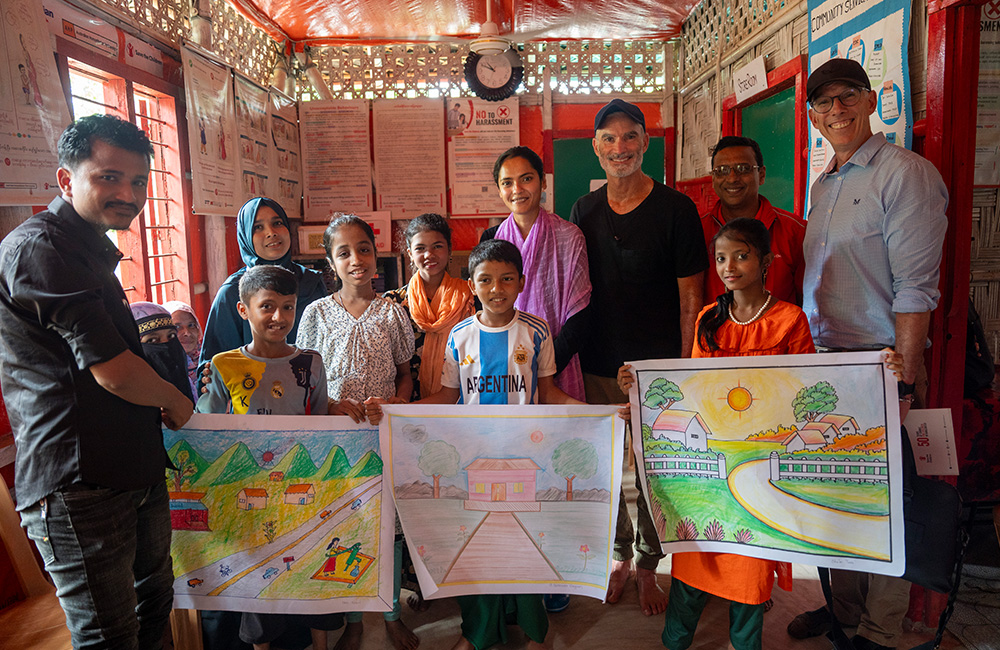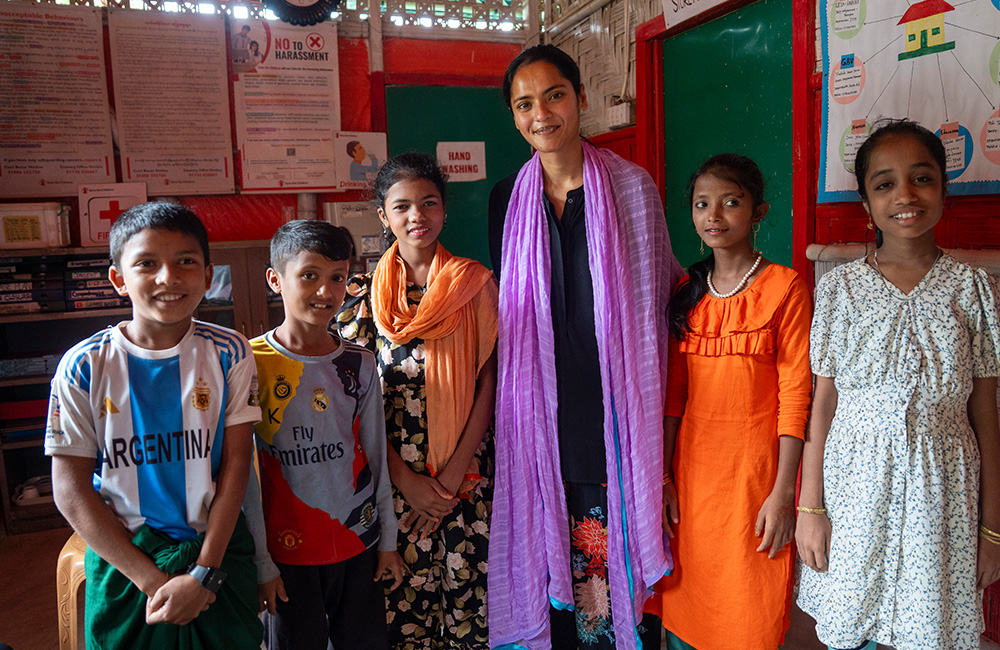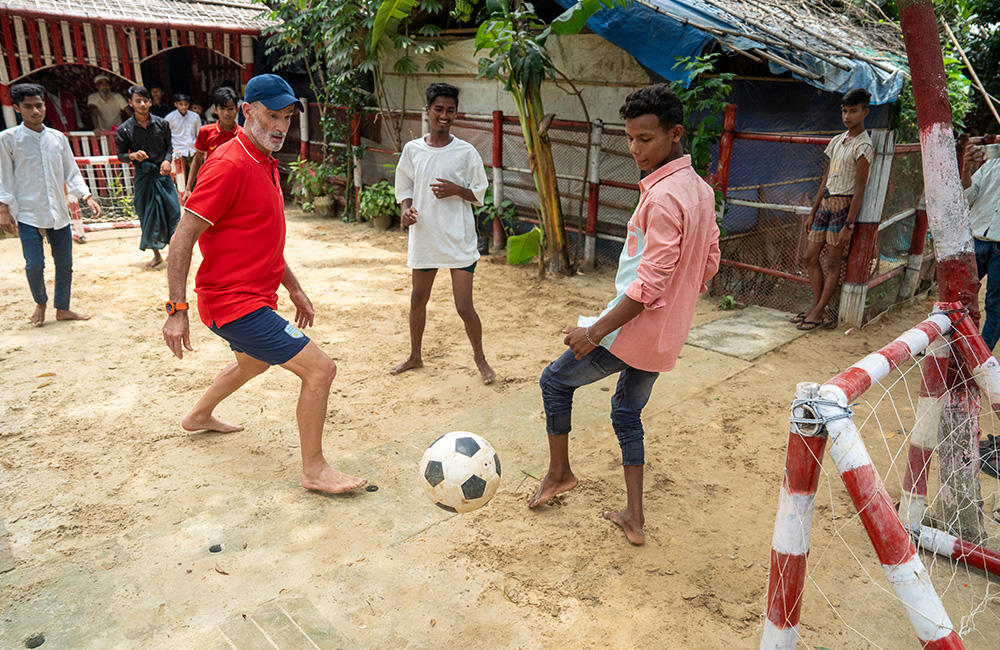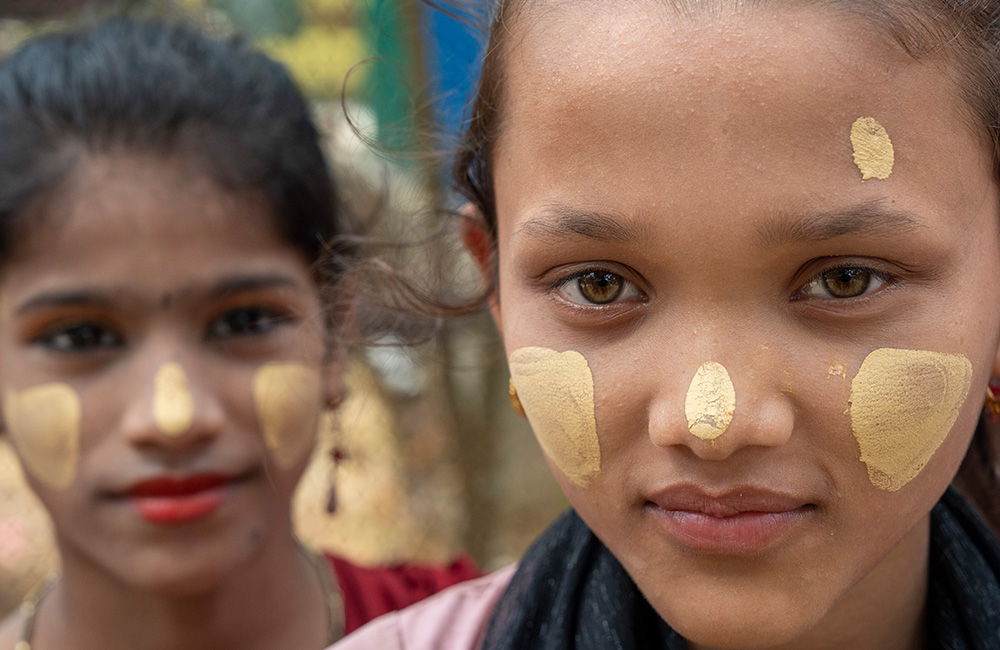Former Socceroo Craig Foster plays the beautiful game with Rohingya refugee children
Eight years ago this month, hundreds of thousands of Rohingya people fled their homeland. Families arrived in Bangladesh with almost nothing, seeking safety in the sprawling refugee camps of Cox’s Bazar. Today, nearly one million people – half of them children – remain living there.
From the beginning, Save the Children has been delivering life-saving support and creating safe spaces for children to learn, play and heal. One of these safe havens is our Multipurpose Child and Adolescent Centre, supported by the Australian Government through the Australian Humanitarian Partnership (AHP).
In June this year, the Centre welcomed former Socceroo captain and human rights advocate Craig Foster, along with Noor Azizah, a Rohingya refugee herself and vocal advocate for the plight of her people, and Dr Graham Thom from the Refugee Council of Australia.
 Noor Azizah, Craig Foster and Dr Graham Thom pose with children who have created artwork in Save the Children’s Multipurpose Child and Adolescent Centre.
Noor Azizah, Craig Foster and Dr Graham Thom pose with children who have created artwork in Save the Children’s Multipurpose Child and Adolescent Centre.They came to see first-hand how the Centre is helping young people to build skills, confidence and resilience.
“Over a million Rohingya who have been forced to flee remain in limbo, trapped in the world’s largest refugee camp with ever dwindling resources,” says Dr Graham Thom. “It is crucial they are not forgotten.”

Noor Azizah with Rohingya refugee children she met in Cox’s Bazar
“Even though I’ve never lived in the camps, Cox’s Bazar is close to my heart,” says Noor Azizah. “It’s where hundreds of thousands of my people sought safety after fleeing the same violence my family escaped.”

Craig Foster joined some of the kids for a game of soccer.
“Sport plays a critical role in places like Cox’s Bazar, where people, especially young people have few opportunities and little control over their futures,” says Foster. “It builds physical and mental health, brings communities together across ethnic lines, and provides a platform for education, skills training, and personal development. We can, and must, do more to give refugee children a chance to grow, thrive and hope.”
Inside the Centre, the visitors met adolescent girls engaged in learning and creative activities. The girls spoke candidly about the skills they are building and the joy they find in the Centre.

“It refreshes our minds,” Zohora* says of why she loves to visit the Centre regularly.
Zannat* and Zohora*, both 12, are two girls who regularly attend our Multipurpose Child and Adolescent Centre where they love to do art and learn skills that will serve them in the future. The Centre offers education, life skills training and psychosocial support, providing a safe space where young people can imagine a future beyond displacement.
“Rohingya refugees’ needs are as urgent today as they were eight years ago, if not more urgent in the world we are living in today,” says Save the Children Australia CEO Mat Tinkler. “With the concerning global shift towards cutting life-saving aid programs, the situation on the ground in places like Cox’s Bazar is becoming more precarious. We are seeing a real time diminishing of resources in the camps, meaning many NGOs on the ground are barely meeting the survival needs of nearly one million people, and in some cases having to cut programs all together.
“It’s time to move beyond short-term fixes, and it is well past time to offer over half a million children the chance at a safer, more hopeful future.”
Eight years on, Rohingya children are still dreaming of that future.
*Names changed for privacy.

This project is supported by the Australian Government through the Australian Humanitarian Partnership (AHP).
Photos: Saikat Mojumder/Save the Children